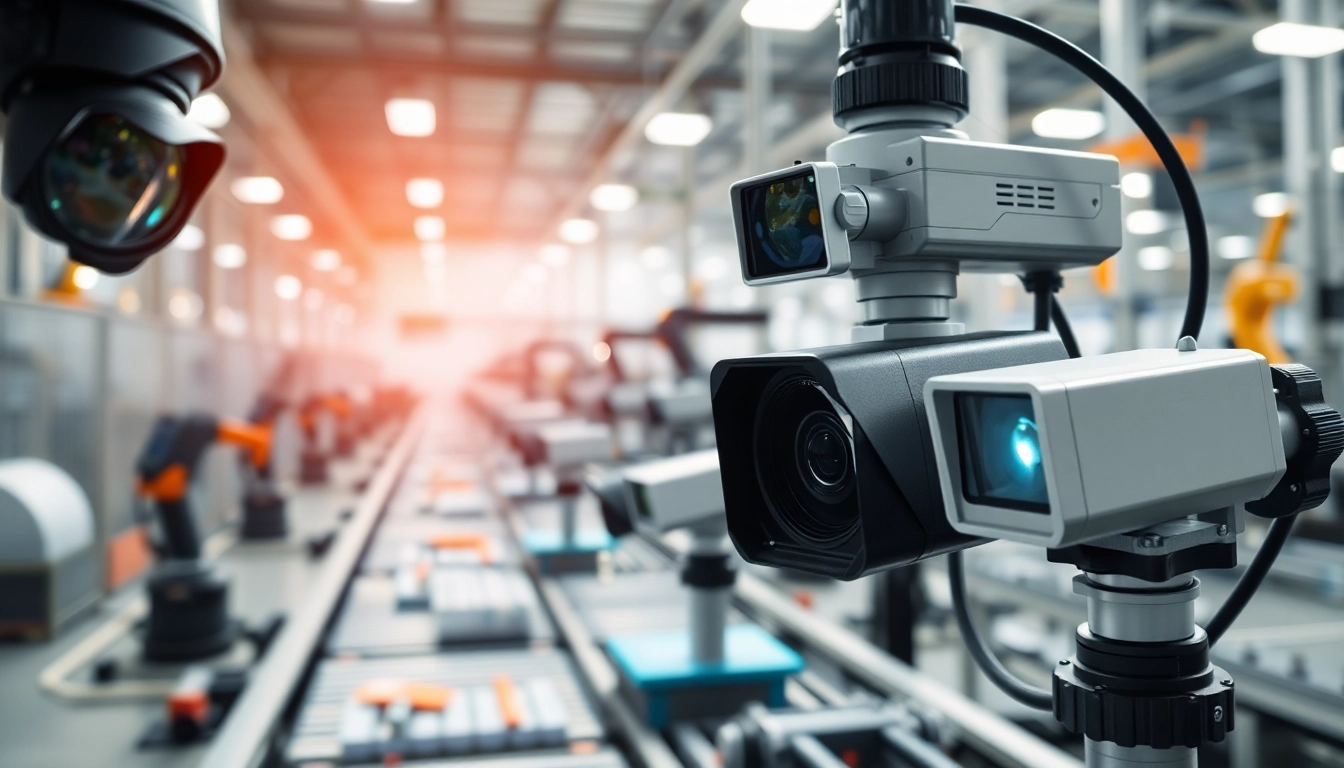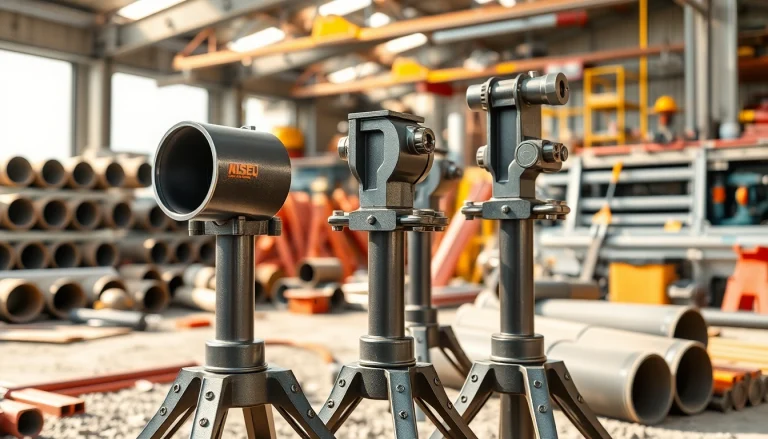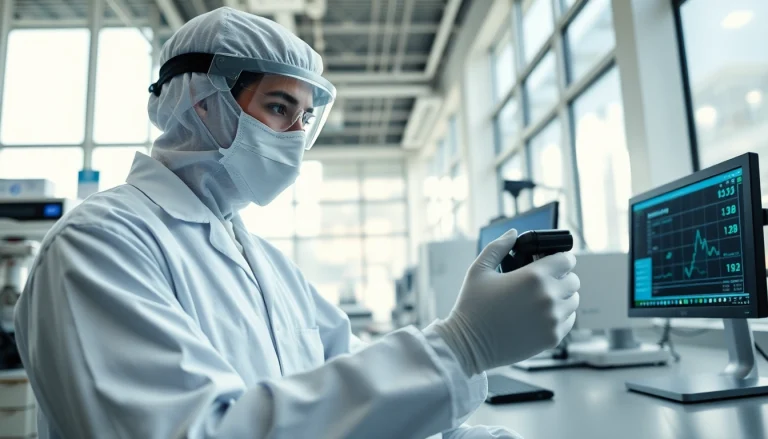What is Machine Vision?
Definition and Key Concepts
Machine vision is a technological discipline that involves the implementation of computer vision techniques for industrial applications. The objective of machine vision is to enable machines to automatically inspect and analyze visual information to perform tasks such as quality control, defect detection, and automated measurement. Typically, machine vision relies on a combination of hardware such as cameras, lighting components, and processing devices, alongside software algorithms that analyze the images captured. A hallmark of this technology is its ability to emulate human vision, processing vast amounts of visual data for decision-making in real-time. For a deeper understanding and examples of machine vision, one can explore resources detailing its uses in various industries.
Components of Machine Vision Systems
Machine vision systems comprise several essential components that work together to achieve effective visual inspection and analysis. The primary components include:
- Cameras: High-resolution cameras are the eyes of the machine vision system. They can be 1D, 2D, or 3D types that capture images of the objects being examined.
- Lighting: Proper lighting is crucial for capturing clear images. Various lighting techniques, including backlighting, ring lights, and structured light, can enhance the contrast and visibility of features in the images.
- Processing Hardware: The captured images are processed using hardware that may include a computer or embedded systems equipped with dedicated graphic processing units (GPUs).
- Software Algorithms: Software is responsible for interpreting the images through pattern recognition, image processing, and machine learning techniques, allowing the system to make informed decisions.
- Communication Interfaces: Interfaces facilitate interaction between the machine vision system and other systems within a manufacturing environment, enabling data sharing and command execution.
How Machine Vision Works
The operation of a machine vision system can be broken down into several key steps:
- Image Capture: The process begins with the camera capturing an image of the object under inspection.
- Image Pre-processing: Once the image is captured, it undergoes pre-processing to enhance its quality. This may include noise reduction and contrast adjustment.
- Feature Extraction: From the enhanced image, the software extracts relevant features (edges, colors, shapes) that are critical for analysis.
- Decision Making: Based on predetermined criteria and algorithms, the system analyzes the features and makes decisions regarding the quality or specifications of the product.
- Output Reporting: Results are compiled and communicated back to the relevant systems for actionable insights, whether that’s triggering an alert for defects or logging data for quality assurance.
Applications of Machine Vision
Industrial Automation Uses
Machine vision plays a pivotal role in industrial automation, where it enhances operational efficiency and product quality. Applications encompass:
- Part Inspection: Automated systems utilize machine vision to inspect parts on assembly lines for defects, ensuring only compliant products progress.
- Guidance Systems: In robotics, machine vision aids in object recognition, allowing robots to navigate spaces and manipulate items with precision.
- Barcode and QR Code Reading: Machine vision systems efficiently read and interpret barcodes or QR codes, facilitating inventory management and tracking.
Quality Control and Inspections
Quality control is one of the primary areas where machine vision is applied. Through continuous monitoring, machine vision systems can detect flaws or deviations in product standards without human intervention. For instance, in the food and beverage sector, machine vision ensures that packaging is intact and labels are correctly placed before reaching consumers. Similarly, in pharmaceuticals, it verifies the serialization of drugs to prevent counterfeiting and ensure traceability.
Machine Vision in Healthcare
Machine vision technology is making significant strides in healthcare, primarily in diagnostics and patient care. Some impactful applications include:
- Medical Imaging: Machine vision algorithms assist in analyzing medical images such as X-rays, MRIs, and CT scans, enhancing the speed and accuracy of diagnostics.
- Surgical Guidance: In advanced surgeries, machine vision systems can provide surgeons with enhanced visibility and accuracy during procedures.
- Robotics in Surgery: Robotic systems equipped with machine vision capabilities can perform minimally invasive surgeries with precision, reducing recovery times for patients.
Machine Vision vs Computer Vision
Understanding Key Differences
While often used interchangeably, machine vision and computer vision are distinct technologies with different focuses. Machine vision primarily pertains to automated inspection and analysis in industrial contexts, whereas computer vision broadly refers to machines’ ability to interpret visual data. The goal of computer vision is to replicate human understanding of images and scenes, applying itself across diverse applications, including facial recognition, augmented reality, and more.
Use Cases for Each Technology
Use cases for machine vision typically include:
- Quality assurance in manufacturing
- Barcode scanning for logistics
- Robotic guidance in assembly processes
Conversely, computer vision applications extend into:
- Autonomous vehicles recognizing pedestrians and traffic signs
- Face detection in security systems
- Image classification in social media platforms
Choosing the Right Technology for Your Business
When deciding whether to implement machine vision or computer vision technology, organizations should consider their specific needs:
- Complexity of Tasks: Machine vision is suitable for straightforward, repetitive tasks, while computer vision can handle complex images requiring pattern recognition.
- Integration Requirements: Evaluate how each technology will integrate with existing systems. Machine vision is generally better suited for automated inspection systems, whereas computer vision might require more computing power and advanced algorithms.
- Scalability: Consider future-proofing; intermediary systems that employ both technologies may offer more flexibility to expand and adapt to new applications.
Implementation of Machine Vision Systems
Steps to Integrate Machine Vision
Efficient integration of machine vision technology requires a structured approach. Key steps include:
- Define Objectives: Determine the specific goals for system implementation, such as quality inspection, productivity improvement, or safety assurance.
- Assess Environmental Factors: Evaluate the production environment to ascertain lighting conditions, types of products, and space available for equipment.
- Choose Appropriate Technology: Based on your objectives and environment, select appropriate cameras, lighting, and software solutions.
- System Testing: Rigorously test the system before full-scale implementation to identify and correct issues. This phase might include calibration and adjustment of algorithms.
- Training: Ensure that all relevant personnel are trained on how to operate, maintain, and troubleshoot the machine vision system.
- Continuous Monitoring and Improvement: After deployment, engage in continuous monitoring of system performance. Use feedback to optimize processes and make improvements.
Challenges in Deployment
Despite its advantages, deploying machine vision can be fraught with challenges, including:
- Complexity of Setup: Setting up an effective machine vision system can be complex, requiring precise configurations and calibrations that may need expert guidance.
- Integration with Legacy Systems: Integrating machine vision technology with existing infrastructure can pose compatibility issues that complicate deployment.
- Cost of Implementation: Initial setup costs, including equipment, software, and training, can be significant, deterring some businesses from investing in the technology.
Best Practices for Success
To mitigate difficulties and enhance the effectiveness of machine vision systems, consider implementing these best practices:
- Conduct Thorough Research: Invest time in researching different systems and technologies to ensure the chosen solution aligns with business goals.
- Engage Experts: Collaboration with specialists in automation and machine vision can streamline deployment and optimize system design.
- Pilot Testing: Start with pilot projects to test efficacy before full-scale implementation, allowing for adjustments based on real-world data.
- Regular Maintenance: Establish maintenance routines to ensure systems remain efficient and effective, addressing any arising issues promptly.
Future Trends in Machine Vision
Advancements in Machine Learning and AI
The future of machine vision is closely tied to advancements in artificial intelligence (AI) and machine learning. As algorithms evolve, machine vision systems can analyze data with greater accuracy, revealing insights that were previously unattainable. Technologies like deep learning allow systems to learn from larger datasets, thus improving their abilities to detect anomalies and make decisions in changing environments.
New Technologies in Machine Vision
Emerging technologies are also shaping the advancement of machine vision. Notable trends include:
- 3D Machine Vision: Advancements in 3D imaging technology provide depth perception, allowing for more complex inspections and understanding of product dimensions.
- Spectral Imaging: This enables the analysis of materials based on their spectral properties, with applications in food safety and pharmaceuticals.
- Integration of IoT: The convergence of machine vision and the Internet of Things (IoT) allows for real-time data collection and analytics across automated systems, enhancing efficiency and monitoring capabilities.
Market Predictions and Growth Outlook
The market for machine vision is predicted to grow significantly in the coming years. Factors such as increasing automation in manufacturing processes, the ongoing push for quality assurance, and the need for efficient production workflows are driving this growth. Analysts estimate the value of the global machine vision market could exceed billions of dollars, reflecting expanding applications across various sectors including automotive, electronics, food and beverage, and healthcare.








